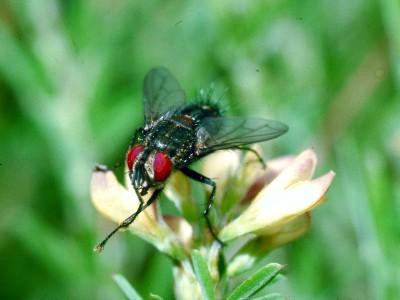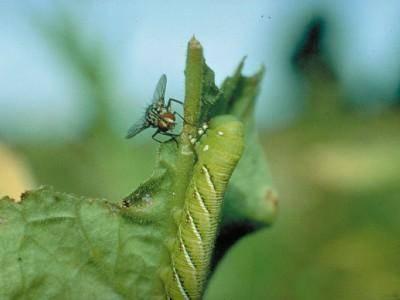About Tachinid flies
-
You may be surprised to learn there are many beneficial flies that prey on garden pests. In fact, parasitoid flies are second only to parasitoid wasps in the sheer magnitude of pest insects they kill.
-
There are 12 families of flies with thousands of species in which some members are parasitoids, but of these the tachinids are the most important.
-
Most tachinids are endoparasites, which means that the developing larvae (maggots) feed within their hosts.
-
Adult female tachinid flies employ a variety of methods to ensure their young will have ready access to food as they grow: some lay eggs on leaves to be eaten by caterpillars, others insert eggs or maggots directly into the host, and still others attach eggs or maggots to the outside of the host.
-
Eggs consumed by the host or inserted by the mother hatch into maggots inside the victim. Eggs affixed to the skin of prey hatch and the maggots bore into the body of the host. Safely inside, the maggots complete their development, consuming their host as they grow.
-
Who knew so many flies were doing us so much good in the garden!
Important species in Maryland
Various Tachinid spp., including Trichopoda pennipes (Feather legged fly) and Istocheta aldrichi.
Life stage(s) that feed on pests
Larvae (maggots). Adults usually feed on honeydew, nectar, or pollen, although a few species feed on host insects as well.
Pest(s)/insects they feed on
Tachinid flies most commonly parasitize the immature life stages (eggs, larvae or caterpillars, nymphs, and/or pupae) of beetles, butterflies, and moths, but also earwigs, grasshoppers, sawflies, and true bugs. Feather legged fly (Trichopoda pennipes) attacks stink bugs and leaf footed bugs, including squash bug and green stink bug. Istocheta aldrichi parasitizes adult Japanese beetles.
Appearance
Eggs: Most tachinids lay small (up to 1/20” in size), oblong, white or grayish eggs.
Larvae (maggots): usually develop within the host and are not seen.
Pupae: Are commonly small, dark reddish, oblong cases.
Adults: Many resemble house flies in size and color. They have robust bodies; are usually gray, black, or striped in color; with stout, hairy bristles protruding from the tip of the abdomen. The Feather legged fly is bright orange with velvety black head and thorax; with dark legs (hind legs have a fringe of short, black hairs); yellow feet; large, brown eyes; and brown and black wings.



